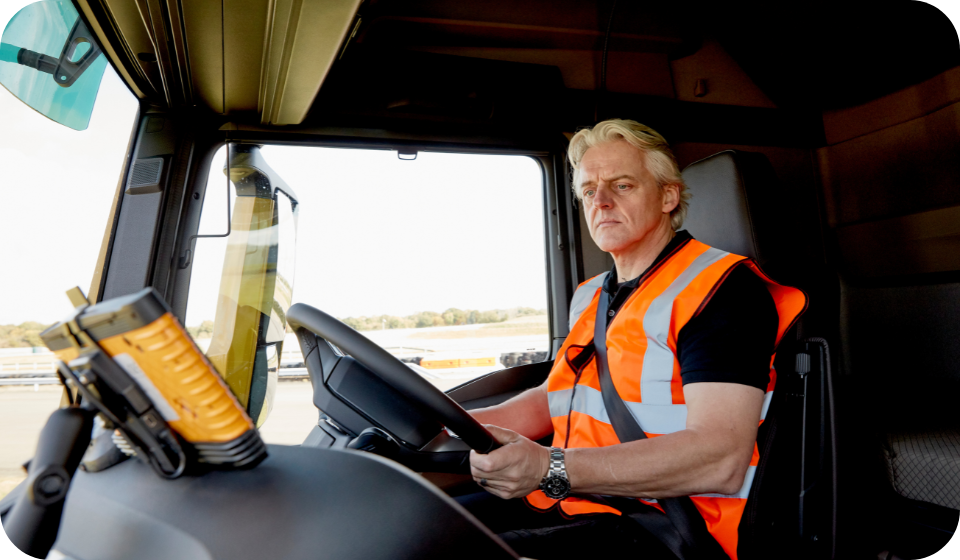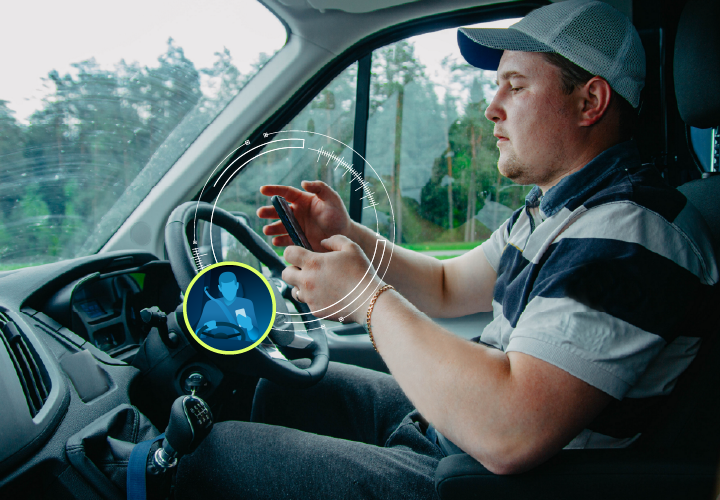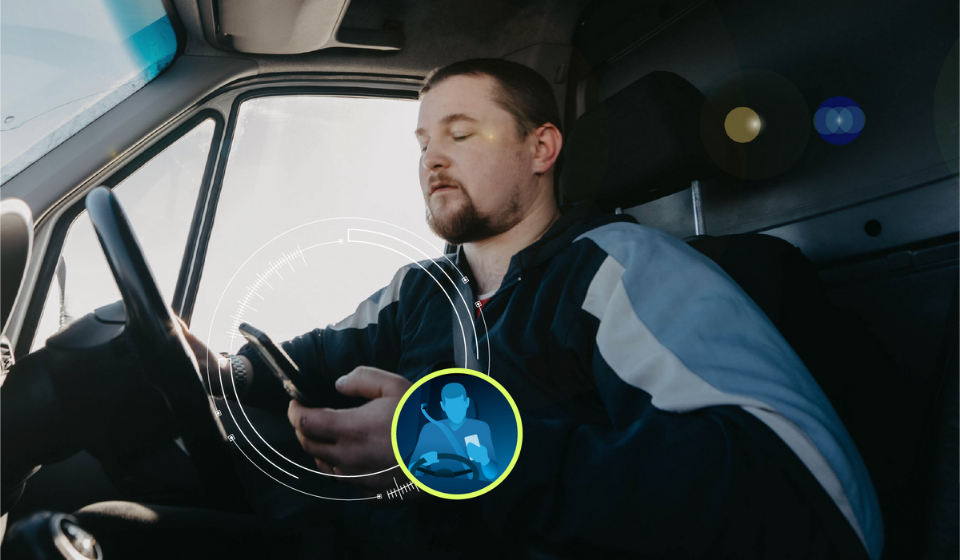Four smart ways technology is making transport compliance easier
Staying compliant can feel overwhelming. From fatigue management to vehicle roadworthiness, transport operators in Australia and New Zealand must meet strict regulations.
The good news? Fleet safety technology makes compliance easier, safer, and less time-consuming. Whether it’s automating processes, reducing risks, or improving safety, the right tools help transport operators stay on top of compliance while running more efficient fleets.
Here are four ways technology can help transport businesses meet compliance goals while improving safety and efficiency.

1. Keep drivers safe with fatigue management
Driver fatigue is one of the leading causes of transport incidents in Australia and New Zealand, and regulators are cracking down hard. Ensuring drivers take the right breaks and stay within legal driving hours isn’t just about compliance—it’s about saving lives.
Why fatigue management matters:
- Fatigue-related accidents account for 11% of fatal crashes in New Zealand. In Queensland, Australia, the Centre for Accident Research and Road Safety – Queensland (CARRS-Q) indicate that sleepiness contributes to 20–30% of all deaths and severe injuries on the road.
- Non-compliance can result in hefty fines and reputational damage.
- Under Chain of Responsibility (CoR) laws, multiple parties (not just drivers) can be held accountable for fatigue breaches.
Fatigue isn’t just a driver issue, it’s a whole-of-business responsibility. Under Chain of Responsibility (CoR) laws, all intermediates in the ‘chain’ such as employers, schedulers, and even customers and suppliers, can be fined if their decisions contribute to a driver exceeding legal work hours or not taking required rest breaks.
For example, unrealistic delivery schedules, excessive workloads, or a lack of driver fatigue monitoring systems could leave a business liable for breaches, even if the driver logs their hours correctly.
How technology helps:
- Real-time fatigue tracking – Automatically logs driver hours, rest periods, and shift patterns.
- Automated alerts – Warns drivers and managers before fatigue breaches occur.
- CoR compliance monitoring – Helps businesses prove they took reasonable steps to manage fatigue risks.
Case Study: transport company and schedulers fined in NSW
A transport company in New South Wales pleaded guilty to a Category 2 offence under the Heavy Vehicle National Law (HVNL) and was fined $180,000. Additionally, the Managing Director and scheduler were each fined $15,000 for failing to implement adequate systems to manage driver fatigue, speed, and compliance with work and rest hours.
Takeaway: Fatigue management isn’t just a box to tick—it’s a critical step toward safer roads. Plus, with Chain of Responsibility laws, it’s not just the driver at risk—businesses must take active steps to ensure compliance.
2. Stay ahead with electronic work diaries (EWDs)
Paper logbooks? In 2025? It’s time to digitise. The National Heavy Vehicle Regulator (NHVR) has approved Electronic Work Diaries (EWDs) as an alternative to traditional paper-based logbooks for tracking driver work and rest hours in Australia.
Why are paper logbooks a compliance challenge?
- Prone to errors – manual data entry increases the risk of mistakes, missing entries, and miscalculations.
- Difficult to verify – paper records can be falsified, leading to compliance breaches.
- Time-consuming – drivers and fleet managers must manually record and review logs, creating unnecessary admin.
- Audit risks – paper logs require physical storage and retrieval, making compliance checks slow and inefficient.
By contrast, EWDs automatically track, store, and analyse driver hours, reducing the risk of fatigue-related breaches and streamlining compliance with Heavy Vehicle National Law (HVNL) regulations.
What about New Zealand?
While EWDs are mandated in Australia, New Zealand operators can use Electronic Logbooks (ELBs) as an alternative to paper logbooks. The New Zealand Transport Agency (NZTA) has already approved multiple electronic logbook providers, helping drivers and operators manage work and rest hours more efficiently.
🚨 Potential future mandate: The NZTA has indicated that a wider adoption of ELBs could become mandatory in the future as part of efforts to improve compliance and road safety. Transport operators should stay informed and consider making the switch early to future-proof their businesses.
Takeaway: Whether you’re in Australia or New Zealand, switching to a digital work diary or logbook can help eliminate paperwork, improve accuracy, and keep fleets and drivers compliant with fatigue management laws—before mandates make them a requirement.
3. Enhance visibility with camera solutions
If you’ve ever struggled to resolve an incident because you didn’t have all the facts, you know the value of visibility. From driver behaviour to road incidents, camera solutions are a game-changer for compliance, safety, and accountability.
Why camera solutions matter:
- Provide video evidence – Protect drivers and businesses from false claims, simplifying dispute resolution.
- Monitor driver behaviour – Help identify and reduce risky habits like distracted driving, speeding or tailgating.
- Prove compliance with Chain of Responsibility (CoR) – Ensure that fleet operators, dispatchers, and executives take reasonable steps to manage risks.
- Reduce insurance costs – Insurers often lower premiums for fleets using dashcams and multi-camera solutions due to reduced risk.
How camera footage is used in compliance & investigations
- Incident investigations: Video footage provides clear evidence in accidents, helping authorities determine fault and ensuring compliance with Heavy Vehicle National Law (HVNL).
- Regulatory compliance checks: Regulators may request footage to verify compliance with fatigue management, speed limits, or safety practices.
- Legal and insurance protection: In the case of false claims or legal disputes, camera footage helps businesses prove driver innocence, avoiding unnecessary fines or reputational damage.
Takeaway: When it comes to compliance, seeing is believing. Camera solutions not only protect drivers but also help businesses meet Chain of Responsibility obligations, reduce insurance costs, and defend against false claims.
4. Ensure vehicle roadworthiness with smart tools
Keeping your vehicles roadworthy isn’t just good practice—it’s the law. Heavy vehicle regulations in Australia and New Zealand require fleets to maintain strict vehicle maintenance and inspection standards to prevent accidents, breakdowns, and compliance breaches.
Why vehicle roadworthiness matters:
- Legal Requirements: Failing to maintain vehicles can lead to fines, penalties, and fleet suspensions under the Heavy Vehicle National Law (HVNL) in Australia and the NZ Transport Agency (NZTA) regulations in New Zealand.
- Financial Risks: Breakdowns and unplanned repairs increase costs, while compliance breaches can void insurance claims.
- Safety Concerns: Poorly maintained vehicles endanger drivers and other road users, increasing the risk of serious incidents.
Government Compliance Checks & Penalties
🇦🇺 Australia:
- NHVR conducts random inspections and issues penalties for defects and unsafe vehicles.
- Major breaches can result in fleet suspensions and court-imposed fines.
🇳🇿 New Zealand:
- The NZTA requires Certificate of Fitness (CoF) inspections for commercial vehicles, with strict compliance standards.
- Non-compliance can lead to immediate de-registration or enforcement action.
How Technology Helps:
- Automated pre-start checks – Drivers can complete digital safety inspections before hitting the road, ensuring compliance.
- Predictive maintenance alerts – Sensors detect potential issues before they cause breakdowns, reducing downtime.
- Real-time maintenance tracking – Keep digital records of all repairs, inspections, and servicing for easy compliance reporting.
Takeaway: Vehicle maintenance compliance is non-negotiable. Using smart tools to track vehicle health, automate safety checks, and maintain digital compliance records helps fleets avoid penalties, prevent breakdowns, and protect drivers.
Compliance made simpler with Microlise
Staying compliant doesn’t have to be a challenge. With Microlise fleet compliance software, you can manage compliance remotely, saving time and resources and removing administrative hurdles.
Combine this with digital vehicle walk-around checks, integrated cameras and incident analysis; which can be broken down to the millisecond, and you have a powerful tool to limit risk, achieve the highest compliance and safety standards and keep your vehicles running like clockwork.





